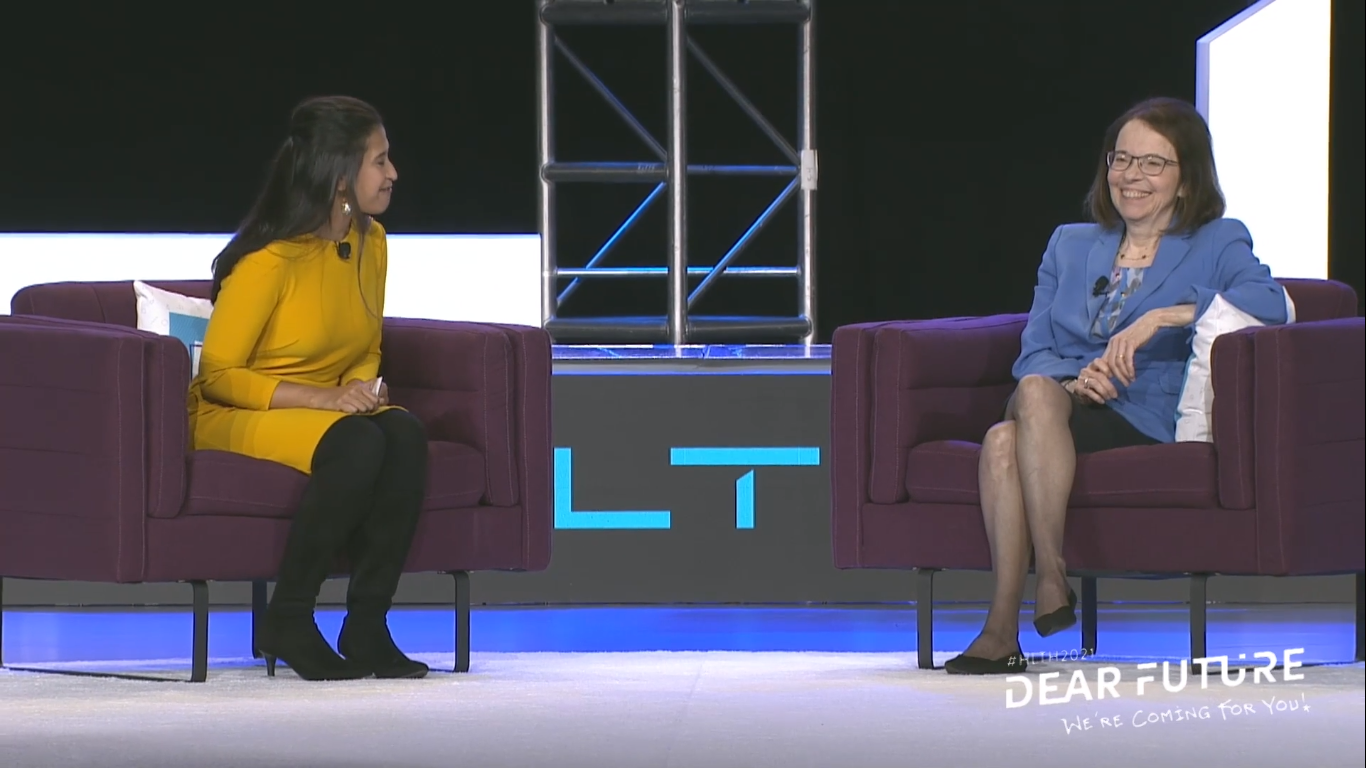Transforming an Academic Healthcare System: Dr. Anne Klibanski at HLTH
Anne Klibanski, M.D., President and Chief Executive Officer at Mass General Brigham, sat down with Arundhati Parmar, Editor-in-Chief at MedCity News, during this year’s HLTH conference. The theme this year was, “Dear future, we’re coming for you.” Continue reading for a summary of Dr. Klibanski’s discussion on health care innovation throughout the Mass General Brigham enterprise.
What is your vision of the future of Mass General Brigham?
Mass General Brigham is an integrated academic healthcare system with two magnificent founding hospitals—Massachusetts General Hospital and Brigham and Women’s Hospital. We also have renowned specialty hospitals such as McClean Hospital, Spaulding Hospital, and Mass Eye and Ear—in addition to a network of community hospitals. When you look across this system and think about the future, it has to take the different components of these hospitals and bring them together to create an integrated academic healthcare system of the future; that means defining where we’re going and what we need to be leveraging.  Our differentiator as a health care system is academia; that means the academic mission is research, teaching, innovation, and caring for communities. In regard to research, there has been this dichotomy between healthcare delivery innovation and academic or research innovation—and that has to be closed. If you think about where we need to go in the future, we must determine how to have the most impact by leveraging research. One way is by looking at the continuum of care. When you create access to the system, you have an experience that begins in the home and goes beyond acute illness—to thinking about health more broadly.
Our differentiator as a health care system is academia; that means the academic mission is research, teaching, innovation, and caring for communities. In regard to research, there has been this dichotomy between healthcare delivery innovation and academic or research innovation—and that has to be closed. If you think about where we need to go in the future, we must determine how to have the most impact by leveraging research. One way is by looking at the continuum of care. When you create access to the system, you have an experience that begins in the home and goes beyond acute illness—to thinking about health more broadly.
If you think about the continuum of care and where care is delivered, this shows us that we have to rely on technology adoption and look to the future of other technologies. Traditionally, we think about these brick-and-mortar systems, and we need them to deliver the highest acuity care in these buildings. But as we think about the future and access, it’s not just local and regional—it’s national and beyond. Creating the capacity using technology will be a critical factor in how we deliver care in the future. Moving patients to the right place for care and providing care closer to home will have a significant impact on lowering total medical expenses. We need to take that highest level of innovative care and put it across the region, country, and beyond.
Is there anything specific that happened during the pandemic that changed the patient experience?
During the pandemic, we learned how to reach, engage, and provide care for people in different communities. This opened up a new avenue of how we think about health in general, getting beyond the acute crisis that often brings people to the attention of health care providers and hospitals. It pushed us to think about this in a very different way of providing the continuum of health across the continuum of care.
Some assumed that it would disadvantage patients and reduce their experience. At the start of the pandemic, we started with a few thousand virtual visits and rapidly accelerated to several million visits. There’s often a question of what you lose when you provide these virtual visits, but it’s not choosing one versus the other. The deliberate and thoughtful discussion has to be around what works in what setting. While many visits have gone back to in-person appointments today, several visits have the potential to be delivered in the home if patients have access to technology that enables health care monitoring and other visits. This technology is available right now, but it has to be used at a broad scale.
What’s been revolutionary to learn during the pandemic is the increase in behavioral health services. There is a local, national, and global crisis, which is an unquenchable need for access to the entire spectrum of behavioral health care. The vast majority of behavioral health visits use technologies, showing a fundamental problem with access to care that is convenient and low-cost.
How is Mass General Brigham taking on health equity?
 Like many things that came up from the pandemic, equity is an issue that has been fundamental for a long time. Equitable access to care is a fundamental principle across Mass General Brigham. We did an analysis that showed us that healthcare disparities could be traced according to zip code. We re-learned so much about what it meant to provide care in an equitable fashion. When we created a central online portal for patients, we learned that many in underserved communities couldn’t access that portal because they didn’t have access to broadband, smartphones, or computers. So, we started reaching out to and partnering with communities in a deliberate and specific way, looking at what community needs assessments revealed. We used text messages and other modalities to reach people. Equitable access through the patient experience is fundamental to what we’re working on at Mass General Brigham in the future. We remain transparent. We’ve had a hard, long look at the data and how patients are treated according to all of these different criteria. We understand that we need to tailor the patient experience and see what patients see. We have a dedicated team looking at this concept of racialized medicine across the system, looking at those things embedded across electronic health records that have actually used race in a way that fundamentally disadvantages people.
Like many things that came up from the pandemic, equity is an issue that has been fundamental for a long time. Equitable access to care is a fundamental principle across Mass General Brigham. We did an analysis that showed us that healthcare disparities could be traced according to zip code. We re-learned so much about what it meant to provide care in an equitable fashion. When we created a central online portal for patients, we learned that many in underserved communities couldn’t access that portal because they didn’t have access to broadband, smartphones, or computers. So, we started reaching out to and partnering with communities in a deliberate and specific way, looking at what community needs assessments revealed. We used text messages and other modalities to reach people. Equitable access through the patient experience is fundamental to what we’re working on at Mass General Brigham in the future. We remain transparent. We’ve had a hard, long look at the data and how patients are treated according to all of these different criteria. We understand that we need to tailor the patient experience and see what patients see. We have a dedicated team looking at this concept of racialized medicine across the system, looking at those things embedded across electronic health records that have actually used race in a way that fundamentally disadvantages people.
